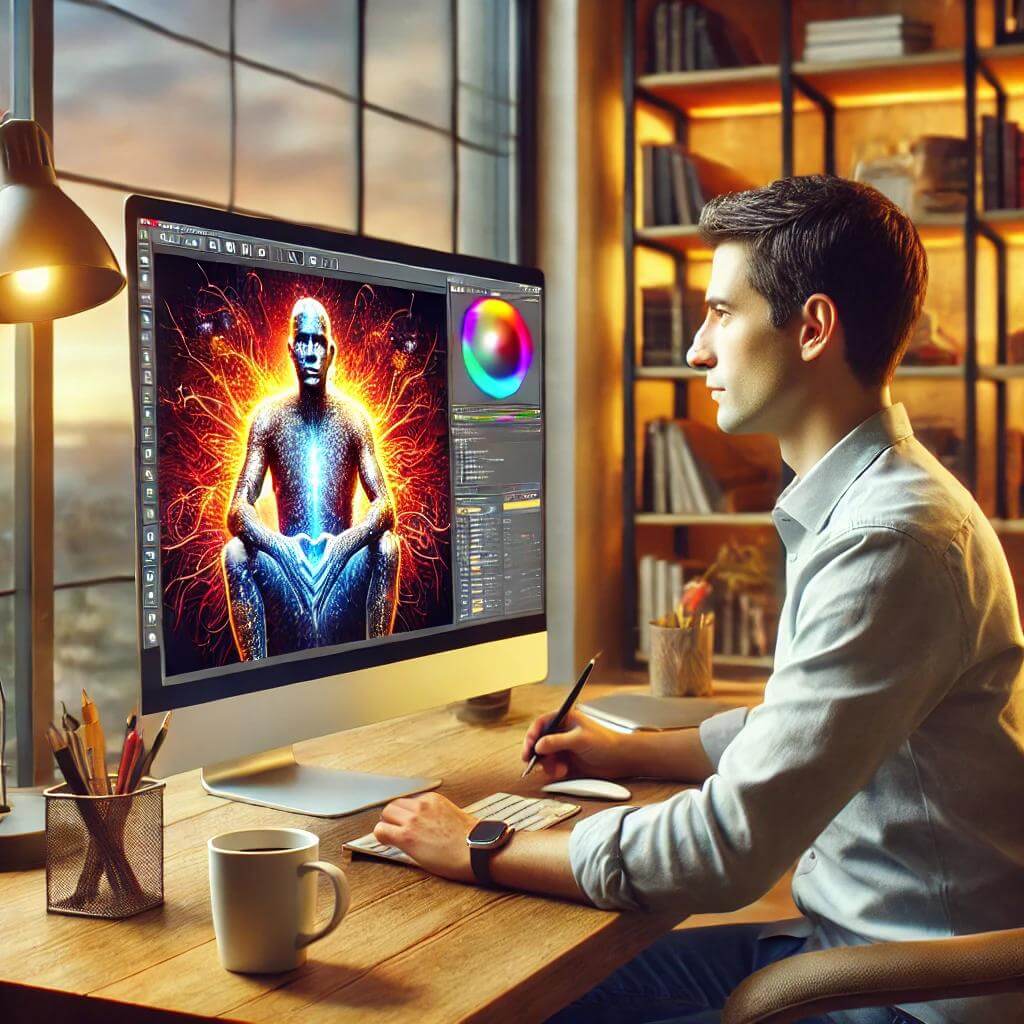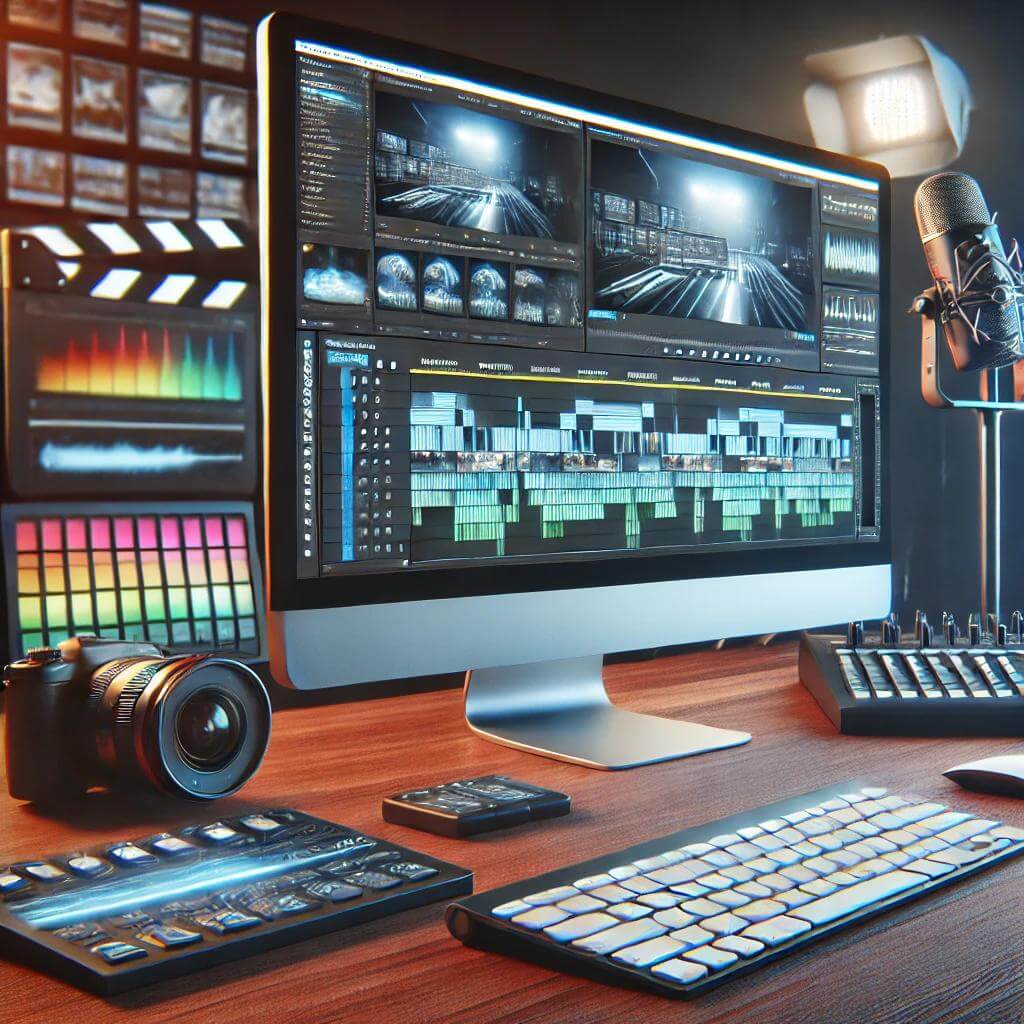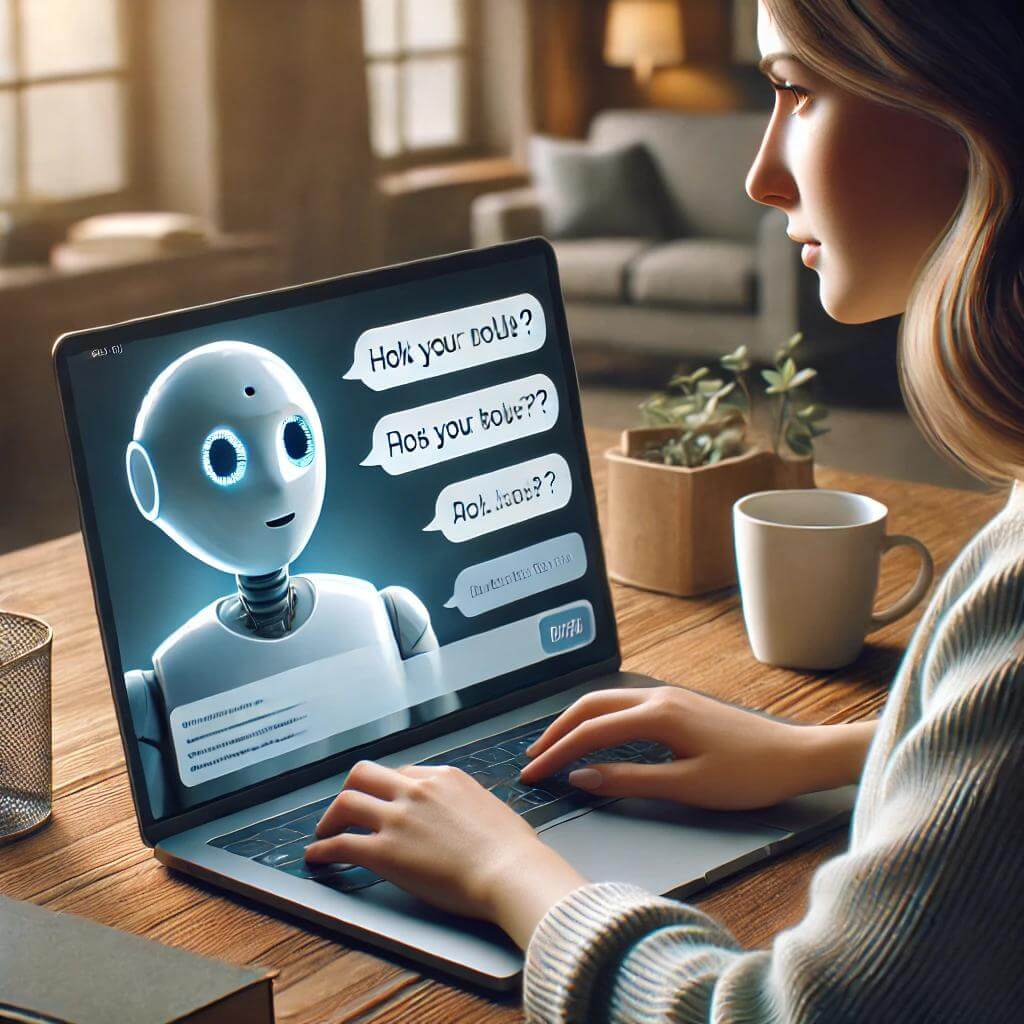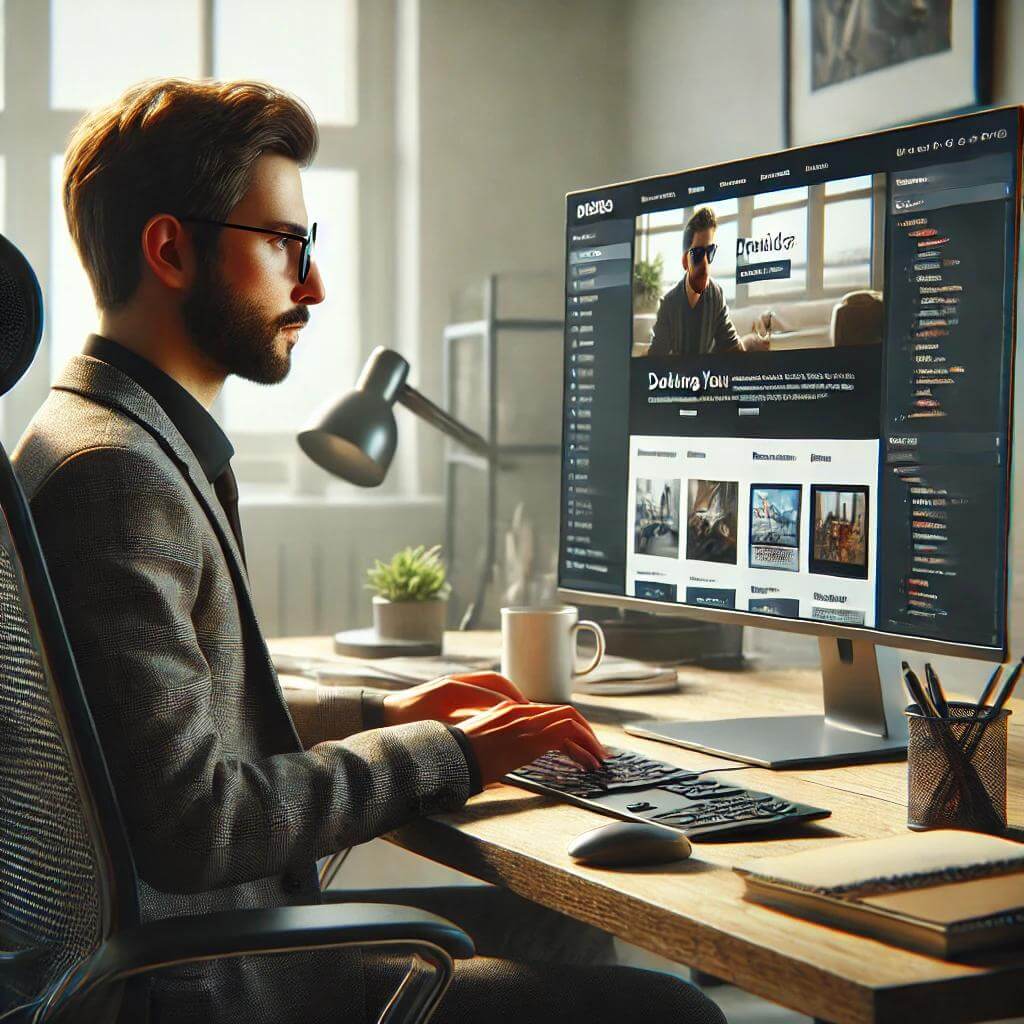Top AI image generator tools in 2025
Imagine typing a short description like “a futuristic city at sunset with flying cars”, and within seconds, an AI transforms your words into a stunning digital artwork. Sounds like magic, right? Well, it’s reality thanks to AI image generators.
These tools have revolutionized creativity, making it easy for anyone—whether a designer, marketer, or hobbyist—to create professional-looking images without advanced artistic skills.
But how do these tools work? And which ones are the best? Let’s dive into the world of AI image generators, explore their capabilities, and compare the top options available.
Best AI Image Generators in 2025
1. Midjourney
Overview: Midjourney is a pioneering AI image generator known for its ability to transform textual prompts into detailed and imaginative visuals. Integrated within Discord, it offers an intuitive platform for users to create art through simple commands.
Advantages:
- Produces high-quality, creative images.
- User-friendly interface suitable for both beginners and professionals.
- Active community support within Discord.
Disadvantages:
- Requires a Discord account for access.
- Limited customization options compared to some competitors.
Specialization: Excels in generating artistic and abstract visuals from textual descriptions.
Pricing Model: Offers a free trial with limited features; subscription plans are available for extended use.
Rating: ⭐⭐⭐⭐☆
Link: Midjourney
2. DALL-E 3 (OpenAI)
Overview: DALL-E 3 is OpenAI’s advanced image generation model capable of creating detailed images from textual prompts, building upon the capabilities of its predecessors.
Advantages:
- Generates high-resolution, detailed images.
- Understands complex prompts effectively.
- Continuously updated with new features.
Disadvantages:
- Access may be limited or require joining a waitlist.
- Potential biases based on training data.
Specialization: Ideal for creating detailed and realistic images from complex textual descriptions.
Pricing Model: Access details and pricing are available through OpenAI’s platform.
Rating: ⭐⭐⭐⭐⭐
Link: DALL-E 3
3. Stable Diffusion (Stability AI)
Overview: Stable Diffusion is an open-source AI model designed for generating images from text inputs, emphasizing accessibility and community-driven development.
Advantages:
- Open-source and customizable.
- Produces high-quality images.
- Strong community support.
Disadvantages:
- May require technical expertise for setup.
- Lacks official customer support.
Specialization: Versatile image generation with a focus on community contributions and open development.
Pricing Model: Free to use; users can host the model on their hardware or use third-party services.
Rating: ⭐⭐⭐⭐☆
Link: Stable Diffusion
4. Adobe Firefly
Overview: Adobe Firefly is an AI-powered image generator integrated into Adobe’s suite of creative tools, offering seamless workflows for designers and artists.
Advantages:
- Deep integration with Adobe Creative Cloud.
- User-friendly interface with extensive customization options.
- Access to Adobe’s vast library of assets.
Disadvantages:
- Requires an Adobe subscription.
- May have a learning curve for new users.
Specialization: Ideal for professional designers seeking integrated AI tools within their existing Adobe workflows.
Pricing Model: Included with Adobe Creative Cloud subscriptions.
Rating: ⭐⭐⭐⭐⭐
Link: Adobe Firefly
5. DreamStudio (Stable Diffusion)
Overview: DreamStudio is the official web interface for Stable Diffusion, providing users with a straightforward platform to generate images from text prompts.
Advantages:
- User-friendly web interface.
- Access to Stable Diffusion’s powerful image generation capabilities.
- No installation required.
Disadvantages:
- Limited advanced features compared to desktop versions.
- Dependent on internet connectivity.
Specialization: Accessible image generation for users seeking a hassle-free, web-based solution.
Pricing Model: Offers a pay-as-you-go model based on usage.
Rating: ⭐⭐⭐⭐☆
Link: DreamStudio
6. Leonardo.ai
Overview: Leonardo.ai is an AI-driven platform that enables users to create high-quality images from textual descriptions, focusing on ease of use and rapid generation.
Advantages:
- Fast image generation.
- Intuitive interface suitable for all skill levels.
- Regular updates with new features.
Disadvantages:
- Limited free usage; subscription required for extended use.
- May lack advanced customization options.
Specialization: Quick and easy image generation for users seeking rapid results without complexity.
Pricing Model: Offers both free and subscription-based plans.
Rating: ⭐⭐⭐⭐☆
Link: Leonardo.ai
7. Google Imagen
Overview: Google Imagen is an AI-powered image generation model developed by Google, designed to create high-quality images from textual descriptions.
Advantages:
- Produces high-resolution, detailed images.
- Understands complex and nuanced prompts effectively.
Disadvantages:
- Access may be limited to research purposes.
- Not widely available for public use.
Specialization: Ideal for generating detailed and realistic images from complex textual descriptions.
Pricing Model: Currently not publicly available; primarily used for research within Google.
Rating: ⭐⭐⭐⭐☆
Link: Google Imagen
8. Canva AI
Overview: Canva AI integrates artificial intelligence into the Canva platform, enhancing design capabilities with features like Magic Resize, Background Remover, and AI-powered design suggestions.
Advantages:
- User-friendly interface suitable for beginners and professionals.
- Offers a wide range of templates and design elements.
- AI features streamline the design process.
Disadvantages:
- Some advanced features require a Canva Pro subscription.
- Limited customization compared to specialized design software.
Specialization: Enhancing graphic design projects with AI-powered tools for efficiency and creativity.
Pricing Model: Offers a free version with basic features; Canva Pro subscription provides access to advanced tools and assets.
Rating: ⭐⭐⭐⭐⭐
Link: Canva AI
9. Runway ML
Overview: Runway ML is a versatile platform offering a suite of AI-powered tools for creatives, including image and video generation, style transfer, and more.
Advantages:
- Wide range of pre-trained models for various creative tasks.
- User-friendly interface with real-time collaboration features.
- Integrates with other creative software like Adobe Premiere Pro.
Disadvantages:
- Some features may require a learning curve for new users.
- Subscription required for full access to all tools and models.
Specialization: Ideal for creatives seeking AI tools for video editing, image generation, and real-time collaboration.
Pricing Model: Offers a free plan with limited features; subscription plans available for full access.
Rating: ⭐⭐⭐⭐⭐
Link: Runway ML
10. DeepArt.io
Overview: DeepArt.io utilizes neural networks to transform photos into artworks by applying the styles of famous artists to user-uploaded images.
Advantages:
- Easy-to-use interface for quick transformations.
- Offers a variety of artistic styles to choose from.
- Produces high-quality, stylized images.
Disadvantages:
- Processing can be slow during peak times.
- Limited customization options beyond style selection.
Specialization: Transforming photos into artworks using the styles of renowned artists.
Pricing Model: Free to use with options to purchase high-resolution images.
Rating: ⭐⭐⭐⭐☆
Link: DeepArt.io
11. Artbreeder
Overview: Artbreeder is a collaborative platform that allows users to create and modify images using generative models, enabling the blending and evolution of images.
Advantages:
- Facilitates collaborative creation and sharing of images.
- Offers extensive customization through parameter adjustments.
- Supports various categories, including portraits, landscapes, and anime.
Disadvantages:
- May require time to understand the full range of features.
- Dependent on community contributions for content variety.
Specialization: Creating and evolving images through collaborative generative models.
Pricing Model: Free to use with optional subscription plans for additional features and higher resolution downloads.
Rating: ⭐⭐⭐⭐☆
Link: Artbreeder
12. NightCafe
Overview: NightCafe is an AI art generator that allows users to create artworks using various algorithms, including neural style transfer and text-to-image models.
Advantages:
- Multiple creation methods provide diverse artistic outputs.
- User-friendly interface with community features.
- Offers daily challenges to inspire creativity.
Disadvantages:
- Free credits are limited; additional credits require purchase.
- Image generation quality can vary based on input prompts.
Specialization: Generating artworks through neural style transfer and text-to-image synthesis.
Pricing Model: Free credits available with options to purchase additional credits or subscribe for regular credit replenishments.
Rating: ⭐⭐⭐⭐☆
Link: NightCafe
13. Craiyon
Overview: Craiyon, formerly known as DALL·E Mini, is a free AI image generator that allows users to create images from text prompts. It is designed as an accessible and easy-to-use tool for generating AI-powered artwork.
Advantages:
- Completely free to use
- Quick image generation
- Simple and user-friendly interface
Disadvantages:
- Image quality is lower compared to models like Midjourney or DALL·E 3
- Can produce distorted or inaccurate results
- Limited customization options
Specialization: Best for casual users who want to experiment with AI-generated images without a subscription.
Pricing Model: Free, with ads supporting the platform.
Rating: ⭐⭐⭐☆
Link: Craiyon
14. Pixlr AI
Overview: Pixlr AI is an online image editing tool that incorporates AI-powered features to enhance and transform images. It offers functionalities like background removal, filters, and effects to streamline the editing process.
Advantages:
- User-friendly interface suitable for beginners.
- Offers a range of AI-driven tools for quick edits.
- No installation required; accessible via web browsers.
Disadvantages:
- Some advanced features are locked behind a paywall.
- May not offer the depth of features found in professional software.
Specialization: Quick and easy photo editing with AI enhancements.
Pricing Model: Offers a free version with basic features; premium subscription available for advanced tools.
Rating: ⭐⭐⭐⭐☆
Link: Pixlr AI
15. Microsoft Designer
Overview: Microsoft Designer is an AI-powered design tool that helps users create professional-quality graphics and visuals with ease. It offers design suggestions and automates various aspects of the creative process.
Advantages:
- Integrates seamlessly with other Microsoft products.
- Provides AI-driven design recommendations.
- User-friendly interface suitable for various skill levels.
Disadvantages:
- Some features may require a Microsoft 365 subscription.
- Limited customization compared to specialized design software.
Specialization: Creating professional designs quickly with AI assistance.
Pricing Model: Included with Microsoft 365 subscriptions; some features may be available for free.
Rating: ⭐⭐⭐⭐☆
Link: Microsoft Designer
16. Deep Dream Generator
Overview: Deep Dream Generator is an online tool that uses neural networks to generate dream-like, surreal images based on user inputs. It allows users to apply various artistic styles to their photos.
Advantages:
- Produces unique, dream-like visuals.
- Offers a variety of styles and customization options.
- Simple and intuitive interface.
Disadvantages:
- Processing times can be slow, especially for high-resolution images.
- Limited free usage; requires subscription for extended features.
Specialization: Creating surreal, dream-like images through neural network processing.
Pricing Model: Offers a free tier with limited capabilities; premium plans available for enhanced features.
Rating: ⭐⭐⭐⭐☆
Link: Deep Dream Generator
Comparison image generator tools
| Name | Brief Overview | Specialization | Pricing Model | Rating | Link |
|---|---|---|---|---|---|
| Midjourney | Text-to-image via Discord | Artistic visuals | Free trial; subscriptions | ⭐⭐⭐⭐⭐ | Midjourney |
| DALL-E 3 | Text-to-image by OpenAI | Detailed images | Access via OpenAI | ⭐⭐⭐⭐⭐ | DALL-E 3 |
| Stable Diffusion | Open-source image generator | Versatile image creation | Free; self-hosted | ⭐⭐⭐⭐ | Stable Diffusion |
| Adobe Firefly | AI in Adobe Creative Cloud | Integrated design tools | Adobe subscription | ⭐⭐⭐⭐⭐ | Adobe Firefly |
| DreamStudio | Web interface for Stable Diffusion | User-friendly image generation | Pay-as-you-go | ⭐⭐⭐⭐ | DreamStudio |
| Leonardo.ai | AI-driven image creation | Quick image generation | Free and paid plans | ⭐⭐⭐⭐ | Leonardo.ai |
| Google Imagen | Text-to-image by Google | High-quality visuals | Research use | ⭐⭐⭐⭐ | Google Imagen |
| Canva AI | AI features in Canva | Graphic design | Free and Pro plans | ⭐⭐⭐⭐⭐ | Canva AI |
| Runway ML | AI tools for creatives | Video and image editing | Free and subscriptions | ⭐⭐⭐⭐⭐ | Runway ML |
| DeepArt.io | Photo to art transformation | Artistic style transfer | Free; paid for HD images | ⭐⭐⭐⭐ | DeepArt.io |
| Artbreeder | Collaborative image breeding | Image blending | Free; subscriptions | ⭐⭐⭐⭐ | Artbreeder |
| NightCafe | AI art generator | Neural style transfer | Free; credit-based | ⭐⭐⭐⭐ | NightCafe |
| Craiyon | Free text-to-image generator | Casual image creation | Free with ads | ⭐⭐⭐ | Craiyon |
| Pixlr AI | Online AI image editing | Quick photo edits | Free; premium subscription | ⭐⭐⭐⭐ | Pixlr AI |
| Microsoft Designer | AI in design tool | Graphic design assistance | Microsoft subscription | ⭐⭐⭐⭐ | Microsoft Designer |
| Deep Dream Generator | AI dream-like images | Surreal image generation | Free; paid plans | ⭐⭐⭐⭐ | Deep Dream Generator |
How Do AI Image Generators Work?
AI image generators rely on deep learning models, trained on millions of images. They use neural networks to recognize patterns, colors, and structures, then generate new images based on the input text.
The Process of AI Image Generation
- User Input – You type a description (prompt) of the image you want.
- AI Processing – The model interprets your prompt and generates an image using its training data.
- Refinement – Some AI tools allow users to tweak details like colors, lighting, and style.
- Final Output – The finished AI-generated image is ready for download or editing.
This entire process happens in seconds to minutes, making AI image generators a powerful tool for artists, businesses, and content creators.
Great Video that explained how AI image generator works:
Top Use Cases for AI Image Generators
Who Benefits from AI Art Tools?
AI-generated images are useful for many industries. Here are some of the most popular use cases:
- Graphic Designers – Quickly generate concept art, backgrounds, or unique assets.
- Marketers & Advertisers – Create eye-catching visuals for campaigns without hiring designers.
- Content Creators – Bloggers, YouTubers, and influencers can enhance content with AI-generated art.
- Game Developers – Design characters, environments, and concept art for games.
- E-commerce & Branding – Generate product mockups and social media visuals.
AI Image Generators vs. Traditional Design Tools
| Feature | AI Image Generators | Traditional Design Tools (e.g., Photoshop) |
|---|---|---|
| Speed | Seconds to minutes | Hours to days |
| Skill Requirement | Minimal | Requires design expertise |
| Customization | Limited control | Full creative freedom |
| Best For | Quick visuals | Detailed, professional editing |
AI tools are not a complete replacement for human creativity but act as a powerful assistant in the design process.
How to Choose the Right AI Image Generator
Not all AI image tools are created equal, so choosing the right one depends on your needs.
Questions to Ask Before Choosing an AI Art Generator
- What will you use it for? (Marketing, art, design, or casual fun?)
- How much control do you need? (Do you want precise edits or quick results?)
- Do you need commercial rights? (Some free tools don’t allow commercial use.)
- What’s your budget? (Some tools offer free versions, while others require subscriptions.)
Free vs. Paid AI Image Generators
| Plan Type | Pros | Cons |
|---|---|---|
| Free AI Tools | No cost, easy to test | Limited features, watermarked images |
| Paid AI Tools | High-quality images, full access | Monthly subscription required |
If you only need occasional AI-generated images, a free plan should be enough. However, for professionals, a paid subscription may be worth the investment.
The Future of AI Image Generators
AI-generated art is evolving rapidly. In the future, we can expect:
- Higher accuracy & realism – More detailed textures and lighting.
- Improved text rendering – AI struggles with text-in-image generation, but future models will improve.
- Greater personalization – AI will learn individual styles for more customized results.
- Better integration with design tools – Seamless editing between AI generators and apps like Photoshop or Canva.
As AI continues to improve, it will become even more powerful for creatives, businesses, and everyday users.
Conclusion – Should You Use AI for Image Generation?
If you need quick, high-quality visuals without artistic skills, AI image generators are a game changer. They offer a fast, budget-friendly alternative to traditional design tools and are becoming increasingly powerful.
However, AI can’t replace human creativity—it simply enhances it. Whether you’re a designer, marketer, or hobbyist, AI tools can help you bring your ideas to life faster than ever.
So, why not give them a try? You might be surprised at what AI can create! 🚀
FAQ: AI image generators
Are AI image generators free?
Some AI tools offer free versions with limitations, but advanced features and high-quality images often require a paid subscription.
Can AI-generated images be used commercially?
It depends on the tool. Some AI platforms allow commercial use, while others restrict it. Always check the licensing terms before using AI-generated art for business.
How accurate are AI image generators?
Accuracy varies. While AI can create detailed images, it sometimes misinterprets complex prompts or generates distorted elements.
Can AI image generators create people?
Yes, but some tools, like Midjourney and DALL-E 3, have ethical restrictions on generating realistic human faces to prevent misuse.
What is the difference between AI image generators and Photoshop?
AI image generators create new images, while Photoshop is a manual editing tool that allows for detailed modifications.
How long does it take for an AI to generate an image?
Most AI tools can create images in seconds to a few minutes, depending on the complexity and resolution.
Can AI image generators replace human artists?
No. AI assists artists by speeding up workflows and providing inspiration, but it lacks creativity, intent, and originality.
Are AI image generators safe to use?
Most AI tools are safe, but some may store or analyze user data, so it’s important to read their privacy policies.
What are the limitations of AI image generators?
Limitations include inaccurate details, bias in training data, licensing issues, and difficulty in generating text within images.
Can AI image generators create images in different artistic styles?
Yes! AI tools like Midjourney, DeepArt.io, and NightCafe allow users to generate images in styles like realism, anime, watercolor, and impressionism.
How do AI image generators handle text in images?
Most AI models struggle with generating clear, readable text inside images. However, future AI updates are improving text integration.
Can AI image generators animate images?
Some advanced tools, like Runway ML, offer AI-powered animation features, allowing users to create short videos from still images.
Are AI-generated images unique?
Yes, AI generates new images every time, but similar prompts may produce similar-looking results.
How do I improve AI-generated images?
Using detailed prompts, specifying styles and lighting, and refining results with image editing software can enhance AI-generated art.
Can AI generate logos and branding materials?
Yes, AI tools like Canva AI and Microsoft Designer can help create logos, business cards, and marketing materials.
What is prompt engineering in AI image generation?
Prompt engineering is the practice of writing specific and detailed prompts to guide AI in generating high-quality images.
How do AI image generators affect the job market for artists?
AI tools automate some tasks but also create new opportunities in AI-assisted design, art direction, and digital content creation.
Can AI image generators create 3D models?
Some tools, like DreamFusion and NVIDIA’s AI models, are developing 3D AI-generated assets, but the technology is still evolving.
Can AI image generators create high-resolution images?
Yes! Some AI tools, like DALL-E 3 and Adobe Firefly, can generate 4K-quality images, but free versions may limit resolution.
What are the ethical concerns surrounding AI-generated images?
Concerns include art theft, deepfake misuse, biased training data, and the impact on human artists.
Do AI image generators understand emotions?
Not really. AI can mimic emotional themes (like “a sad painting”), but it doesn’t feel or interpret emotions like humans.
Can AI image generators remove backgrounds?
Yes! Some AI tools, like Canva AI and Pixlr AI, offer automatic background removal for easy editing.
What is inpainting in AI image editing?
Inpainting allows AI to fill missing parts of an image, useful for restoring old photos or modifying details in AI-generated images.
Do AI image generators use real photos?
No, AI models are trained on datasets of real images, but they don’t copy or reuse actual photos.
Can AI image generators be used for book covers?
Yes! Many authors and publishers use AI tools to design book covers, concept art, and promotional images.
Are there AI image generators for specific industries?
Yes! Tools like Runway ML are used for video effects, while Deep Dream Generator specializes in psychedelic and surreal art.
Can AI image generators create website designs?
Yes! Some tools, like Microsoft Designer and Canva AI, help generate website layouts, social media posts, and branding assets.
Can AI image generators create landscapes and environments?
Yes! AI tools like Midjourney and Stable Diffusion can generate detailed landscapes, cityscapes, and fantasy worlds.
How do AI image generators handle lighting and shadows?
AI models analyze lighting patterns from their training data to generate realistic or stylized lighting effects.
Can AI generate consistent characters across multiple images?
Most AI models struggle with consistency, but some tools, like Leonardo.ai, allow users to train custom character styles.
Do AI image generators work with VR or AR?
Yes! AI-generated images are being integrated into VR/AR applications for gaming, design, and virtual experiences.
How do AI image generators compare to stock photos?
AI-generated images are custom-made based on prompts, while stock photos are pre-existing and may have licensing restrictions.
Can AI image generators replicate famous artists' styles?
Some tools, like DeepArt.io and NightCafe, allow users to apply artistic styles, but copying copyrighted styles may be restricted.
Are AI-generated images copyright-free?
It depends on the platform. Some AI tools grant full commercial rights, while others require attribution or licensing.
Can AI image generators create pixel art or retro-style images?
Yes! Many AI models support 8-bit, pixel art, and retro aesthetics by specifying these styles in prompts.
How can AI help tattoo artists?
AI tools can generate custom tattoo designs, offering inspiration and helping clients visualize their ideas before tattooing.
What’s the biggest challenge AI image generators face today?
Challenges include bias in training data, improving text-in-image accuracy, and ethical concerns around AI-generated art ownership.
Can AI generate logos for businesses?
Yes! AI-powered tools like Canva AI and Microsoft Designer can create logos, branding materials, and social media assets.
Can AI image generators create animations?
Some AI tools, like Runway ML, offer features that allow users to animate AI-generated images into short clips.
What is text-to-image AI?
Text-to-image AI is a technology that converts written descriptions into visual images using deep learning models.
Can AI create hyper-realistic human faces?
Yes, tools like This Person Does Not Exist generate realistic human faces that are completely AI-generated.
Can AI help architects and interior designers?
Yes! AI image generators can create concept art, architectural renders, and interior design mockups.
Are AI-generated images biased?
Yes, AI models can reflect biases from their training data, leading to skewed or stereotypical representations.
What are AI-generated NFT artworks?
Artists use AI to create unique, algorithm-driven digital art, which can be sold as NFTs (non-fungible tokens).
Can AI image generators create memes?
Yes! Some AI tools can generate funny meme-style images, though human creativity is often needed for the best results.
What industries benefit most from AI image generators?
Industries like advertising, gaming, fashion, film production, and social media marketing use AI-generated visuals.
Do AI image generators support different file formats?
Most AI tools allow downloads in JPG, PNG, and sometimes SVG or PSD formats for further editing.
Can AI generate cartoon or comic book styles?
Yes! Tools like DeepArt.io and Midjourney allow users to create cartoon, anime, or comic book-style artwork.




Post Comment